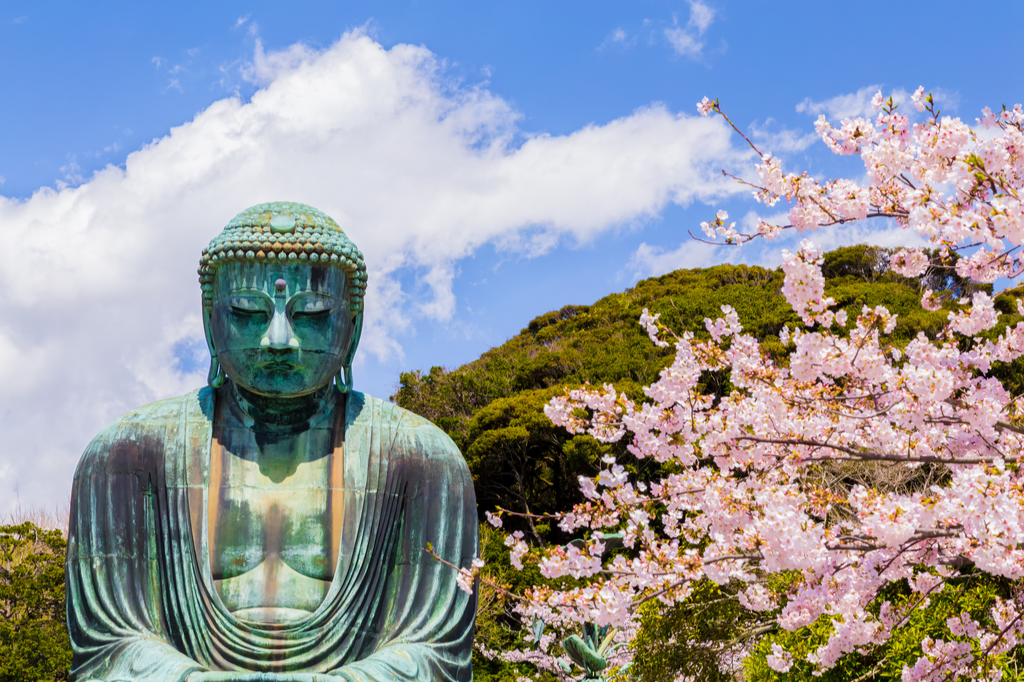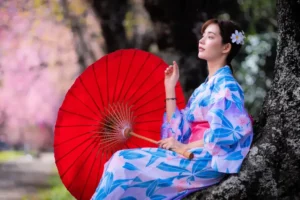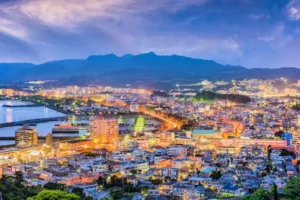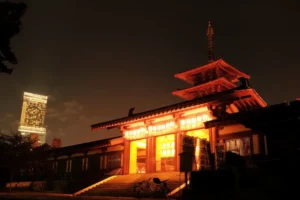Almost anyone interested in Japan knows about Tokyo, the current capital of the island nation. Many also know that Kyoto was once the capital as well. However, before Kyoto, there was Kamakura. Kamakura was once the most populated city in Japan but now serves as a popular tourist destination for people to enjoy a taste of traditional Japan.
Thanks to its history, this coastal city is home to plenty of historical sites preserved by the local and national government. People often call it “Kyoto of Eastern Japan,” thanks to its large concentration of traditional sites and culture. Today, look at some of the best places to visit to get a feel for historical Kamakura.
A Brief History of Kamakura
Between 1185 and 1333, the Kamakura Shogunate ruled the city, and for 100 years, it was the most populous settlement in Japan. This era was the Kamakura period. Before the Kamakura period, Minamoto no Yoritomo (a.k.a; the famous Ashikaga Tadayoshi) took power from the Taira clan and eventually established a military government there.

From that point on, this city became the de facto capital, meaning that many people and religious leaders flocked to the city. This led to the preservation of older religious structures and the building brand new ones as religious sects were founded.
Kamakura’s status as the capital changed due to fighting, which led members of the Ashikaga shogunate to leave for Kyoto. Although they planned to return to Kanagawa prefecture, they stayed in Kyoto. However, many of the structures in the former capital remain, and many tourists frequent them daily. Let’s take a closer look at some of these historical sites.
Great Buddha

The Great Buddha of Kamakura was once Japan’s second largest Great Buddha statue, second only to the one in Nara. It still stands at 11.4 meters high today, and its materials are bronze, though it was initially covered in gold leaf. The statue was created in 1252, and it’s almost 800 years old. It was initially housed inside a temple-like most other Great Buddha statues but was moved after the temple buildings collapsed due to natural disasters. It still sits on the grounds of Kotokuin Temple and is a great place to visit in Kanagawa in winter.
Inamuragasaki
This one is a bit unique. Inamuragasaki looks like an ordinary beach. Many people go there to get some peace during the summer when other beaches are full of people. However, this cape is an important historical landmark for Kamakura.
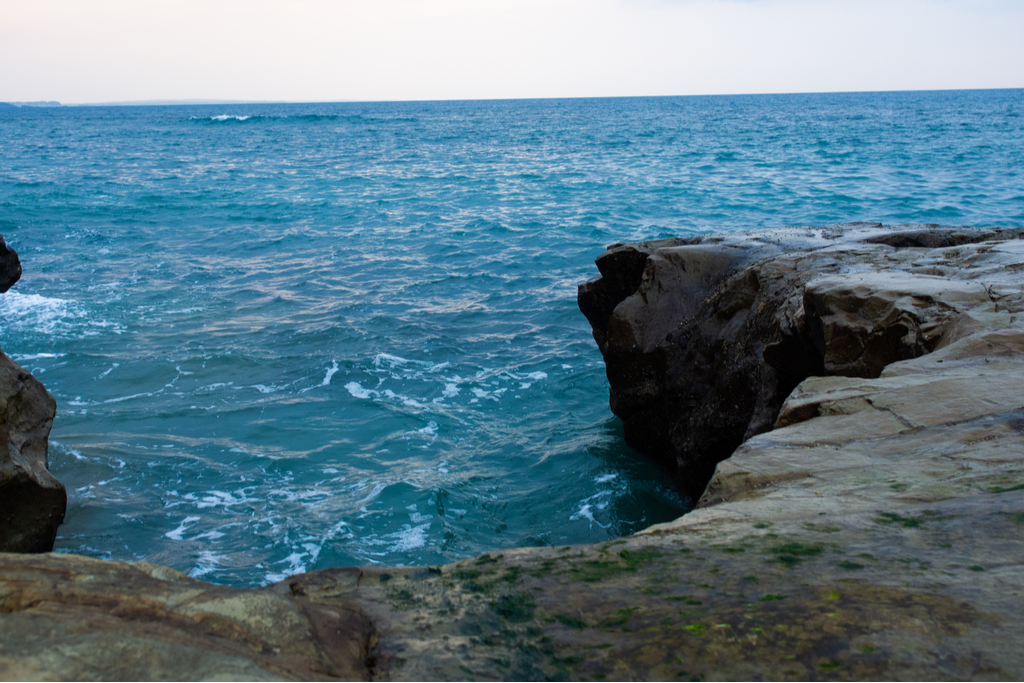
Due to the geography and steep mountains of the area, Inamuragasaki used to be the main entry point for people coming into Kamakura. Impassable by land, it was a natural defense for the old capital. It pops up in a handful of historical records because of how much it interfered with military invasions.
However, this place is important to Japanese history because it led to Kamakura’s downfall. Nitta Yoshisada, an invading leader, took advantage of a low tide, entered Kamakura with his troops, and captured the city. This important event has marked as a historic site by the Japanese government. Nowadays, anyone can enjoy this place for its scenery and historical importance.
Are you looking for amazing snacks from Japan? Discover Japan’s rich culture via its regional culinary traditions: Sakuraco sends traditional sweets & snacks from across Japan to your door.
Buddhist Temples and Shinto Shrines
Due to the many temples and shrines, we will briefly describe some of the most interesting ones. However, there are many amazing religious locations to visit here, so please check out even more of them if you can.
Hokokuji Temple
Hokokuji (Hokoku Temple) is famous for its ‘Bamboo Temple’ and beautiful bamboo garden. It was first established in 1334 and is the family temple of the Ashikaga and the Uesugi clans (clans of feudal lords from the Warring States Period). Some say that the temple even houses the ashes of several Ashikaga family members.
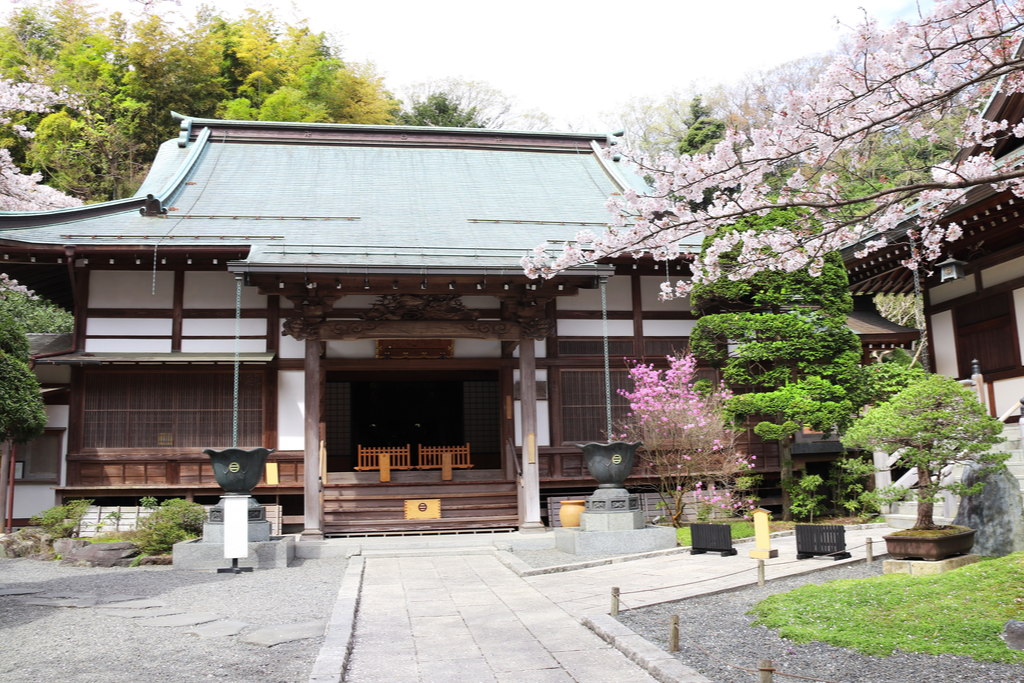
It is the origin of several cultural properties. These include the teachings and wooden seals of founder Tengan Eko, rare works of art from both Japan and overseas, and memorials for those who passed away in the 1333 battle of Kamakura, where the Kamakura Period ended.
Hasedera (Hase Temple)
This temple is not to be confused with the one in Nara (which bears the same name). It was completed in 736, but it grew during the Kamakura period. It’s also famous for its hydrangeas. People also call it the Hase-Kannon due to the Kannon statue in the main hall, one of Japan’s tallest wooden statues. The statue is one of two built by a monk named Tokudo, with the other housed in the Nara Hasedera.
Enoshima Shrine
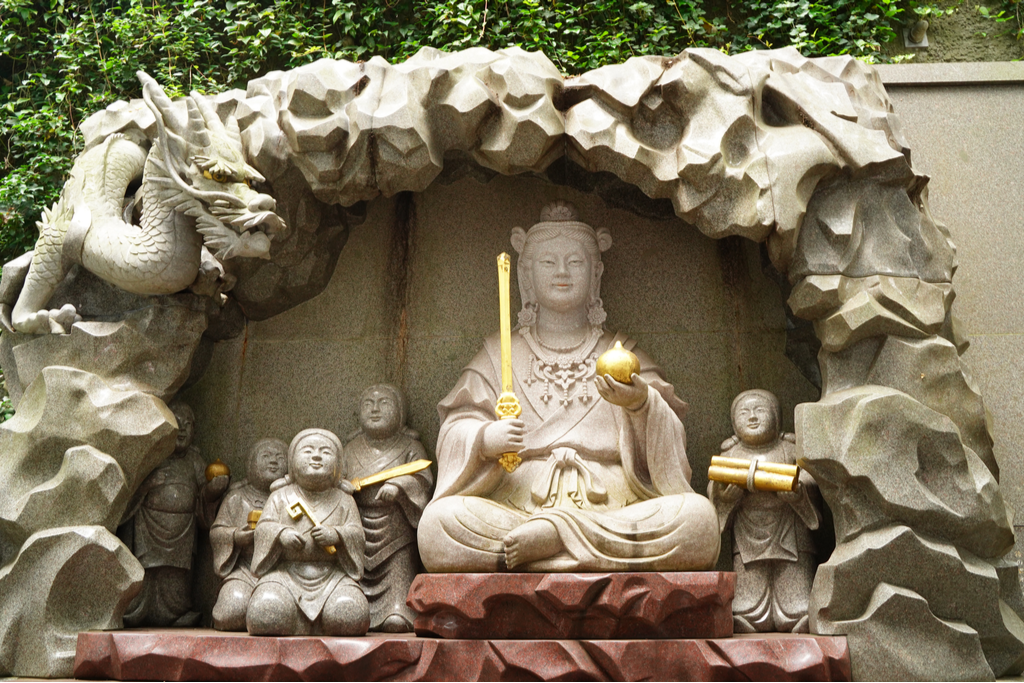
Enoshima itself is an island that has plenty of attractions and beautiful beaches. However, it is also home to three shrines collectively called Enoshima Shrine. It also has one of the most famous statues of Benzaiten (also known as Benten), Enoshima’s patron goddess and the goddess of wealth. According to legend, Benzaiten created Enoshima by subduing a five-headed dragon.
Komyoji

Komyoji is somewhat of a mystery in terms of its exact origins. However, the temple itself says that Hojo Tsunetoki, the de facto ruler of Japan, founded it in 1240. Its original name was Rengeji, but Tsunetoki changed it after seeing it in a dream.
There are many conflicting accounts about the founding of this temple. Either way, Komyoji enjoyed religious and financial support from emperors, shogun (similar to a commander-in-chief), and daimyo (a feudal lord). Thanks to that, it is a beautiful temple with an equally beautiful rock garden. It even has a pet cemetery, so your pets can live a happy afterlife.
Kenchoji
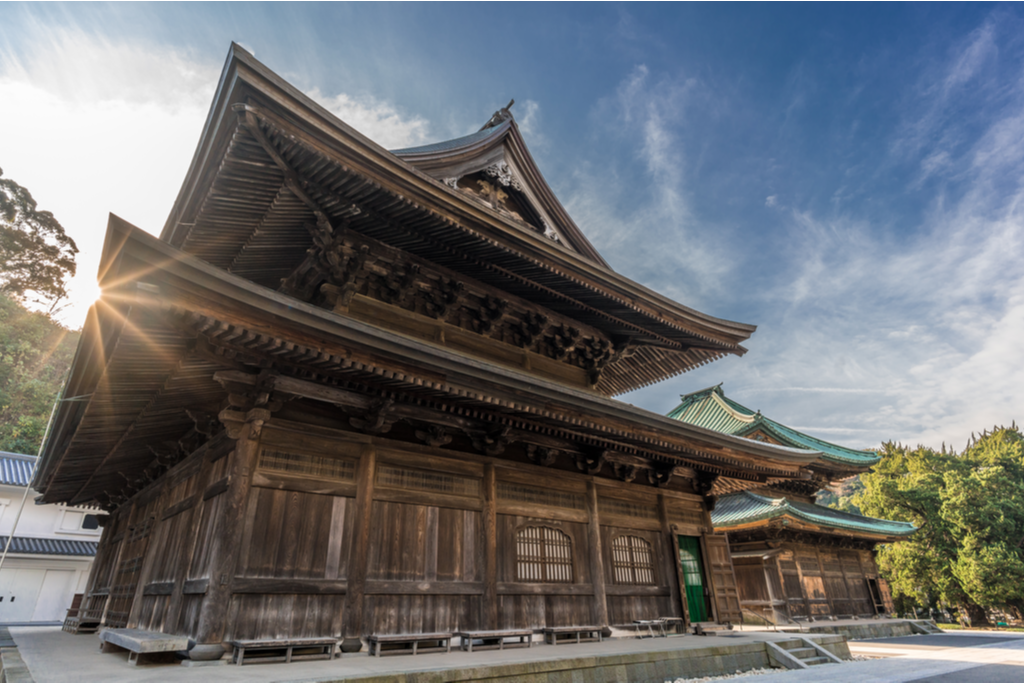
This temple was completed in 1253 and was founded by Kankei Doryu, a Chinese Zen master who relocated to Japan only several years prior. This temple is the most powerful of Kamakura’s Five Great Zen Temples. It’s also the oldest Zen training monastery in Japan. This large temple has many natural surroundings making it a popular site to relax and commune with nature.
On top of its spiritual history, it was also instrumental in the politics of Kamakura, using its wide reach to help in policy making. Also, Kenchoji and the other Great Temples developed their unique style of literature, called the Japanese Literature of the Five Mountains.
Tsurugaoka Hachimangu
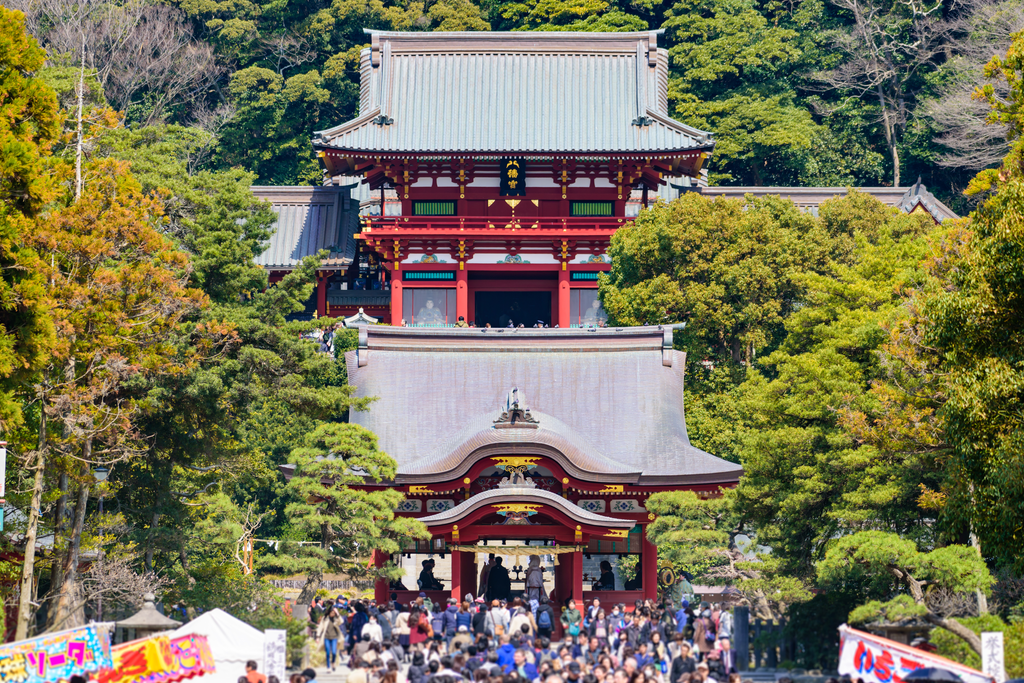
Founded in 1063, Tsurugaoka Hachimangu is one of the most important Shinto shrines of Kamakura. Hachiman is the patron god of both the Minamoto clan and of samurai in general. The Minamoto family, more specifically Minamoto Yoriyoshi, founded the temple, and later, Minamoto Yoritomo became the founder and first shogun of the Kamakura government.
It is a massive complex with a secondary shrine, a garden, two ponds, and other buildings. Here, you can see peonies, dance and music performances, and a massive hatsumode (New Year’s Prayer) event that attracts two million people a year over a few days.
Meigetsuin Temple (Ajisaidera or Hydrangea Temple)

Meigetsuin Temple is also known as the Hydrangea Temple, thanks to the hydrangeas that bloom there in June. It was founded in 1160 and has a beautiful temple ground. On the temple grounds are the main hall, gardens, and a cave used as a tomb.
The temple is also affiliated with the moon, with Meigetsu meaning bright or harvest moon. In Japan, rabbits are often affiliated with the moon, so rabbit designs adorn the temple’s decorations. Some of them are even doing mochitsuki (rice cake pounding).
Kamakura is a must-see for Japanese history buffs, on top of having delicious food, amazing scenery, and beautiful beaches. No wonder it is considered one of the best places to visit outside of Tokyo. Were there any places that caught your eye? Let us know in the comments below!

